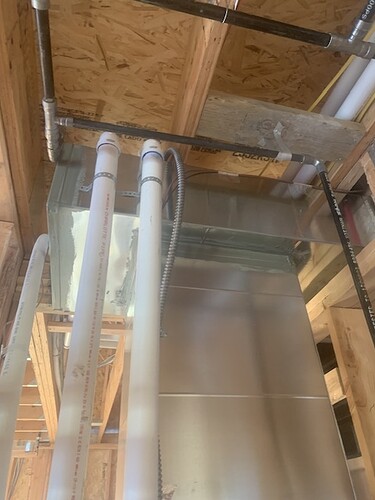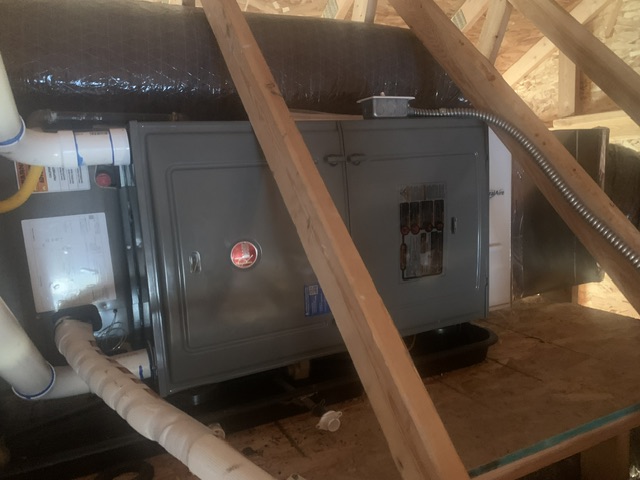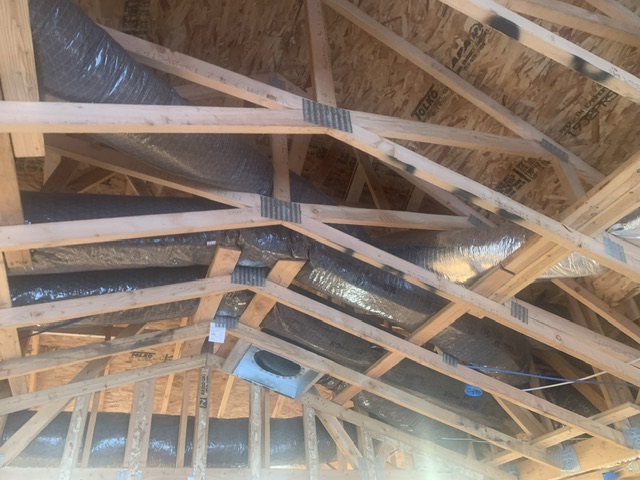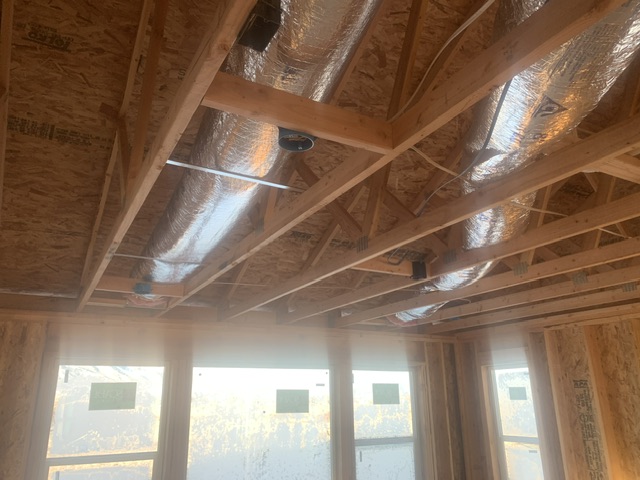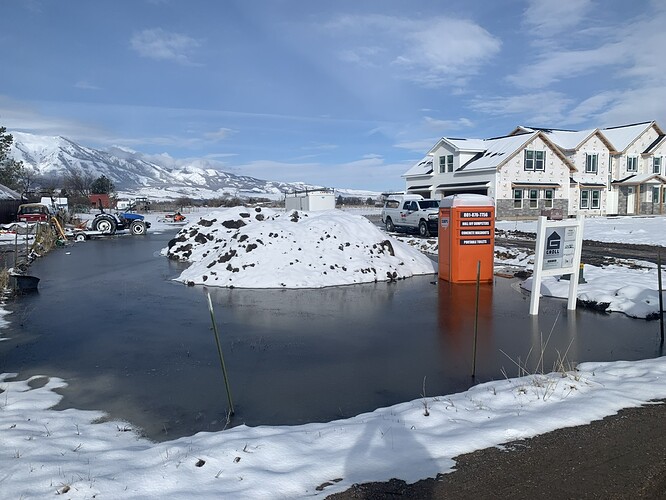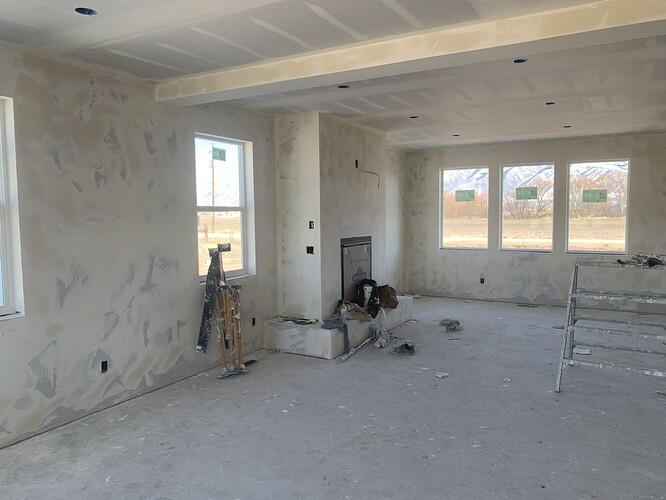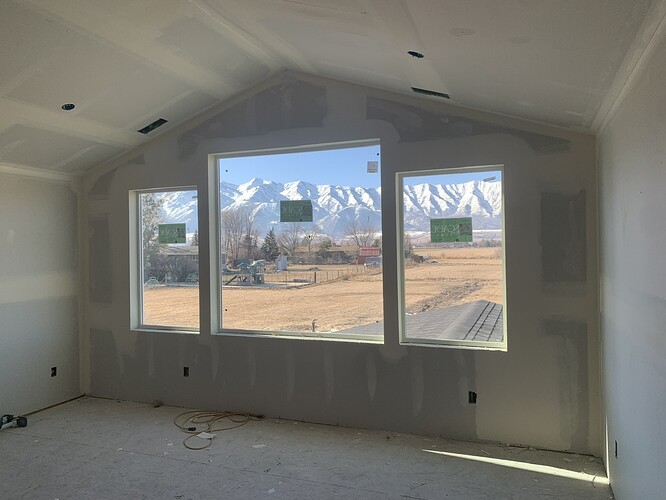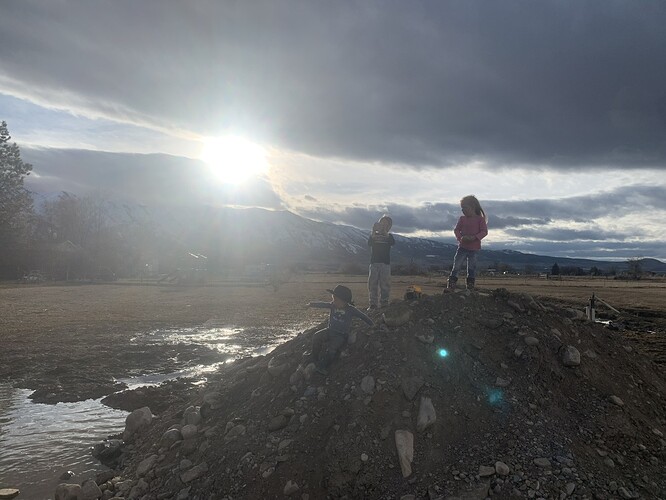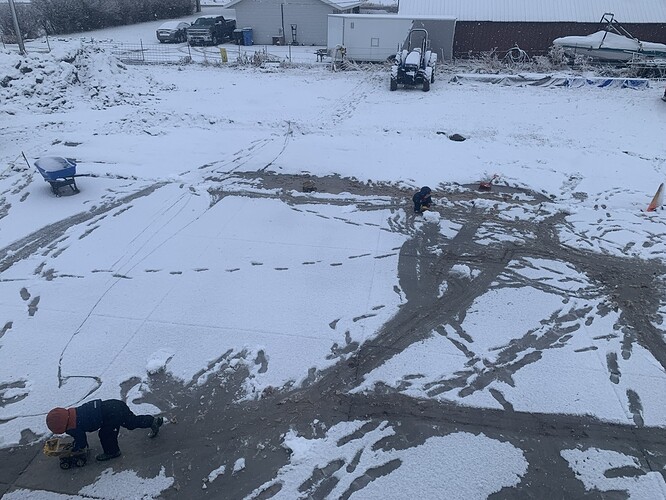So true!!! ![]() You are good with math…must be an engineer!
You are good with math…must be an engineer!
Since we know you are around, I think it is time for a “House Building Update” for the Official Langmuir Lounge Retreat Lodge in Utah!!!
You expect me to come ‘ski’ with you after showing these videos!!!
I know some good skiers, but I don’t think any of them would think this was a casual ski trip. Now, admittedly, some of the Wackos would think it looks ‘interesting’, but, uh, I’m not one of them. I have my own fringe outlets, but jumping off a snow bound mountain cliff ain’t one of them!
I look at some of the photos I took in my ‘youth’ and I get vertigo. Right now, looking out my 2nd story loft of my workshop takes some ‘preparation’.
Now if you had shown me the ‘J’ bar photos…
AND, oh by the way, you are seriously avoiding Jimmy’s question!
We are still in the thick of it. I have ended up doing more of it than I planned. I’ve been meaning to post an update but haven’t got around to it. Carpet comes on Monday and I still have allot to get done before it gets here.
Do any of you have any experience with a VFD well booster pump. The artesian pressure in the well fluctuates between 20-30 psi. I just need to boost it up to 60. I’d like to also run my sprinklers off the same pump. I’m getting conflicting info about how well it would work with relatively large fluctuations in demand. For example 1 gpm to fill the toilet vs 20 gpm to run sprinklers.
I don’t know pumps but some people with inadequate water volume use a buried tank of up to 1000 gallons. I would not use that water for drinking. If it stays in the tank very long, then it needs some treatment like UV filters.
Putting in a pump that outputs 60+ that has pressure regulators to control pressure to the house, and irrigation. All I can think of. That or a pressure tank.
I thought that house pressures were close to 100psi (residential). AI says it’s between 40 and 80 with a target of 60.
I am pretty sure they make potable accumulators. Either compressed air or nitrogen charged.
Welcome back long time no see
Is it just a residential sprinkler system or are you irrigating?
Depending on how large the volume which running a sprinkler system at 20 GPM for an hour is the horrendous volume of water residentially you would need a enormous pressure tank.
You could consider splitting off the irrigation to a separate storage and pressure tank so it’s regulated separately from the house.
Just my lawn. I was figuring 6 heads per zone so 18 gpm. I guess I could do fewer heads.
This is the pump I was planning to use.
https://www.dabpumps.com/sites/default/files/document/60171022_ESYBOX_TS_ENG.pdf
Might be better off going with the smaller one (ESY mini) and use a second pump for the sprinklers?
I think this pump has the capacity if I could program it to drop the pressure demand from 4 bar to 3 bar when the sprinklers were running. Looking at the pump curve it is in range but on the margin.
At my last house I had a shallow well for irrigation with a Myers QP15 pump. I ran 3 zones at a time with it. It was a great pump.
The well guy said it would work… I’m just a little skeptical.
Both pumps would be in my mechanical room. I ran a 1-1/2” line from the well.
The well guy talked me into one line in and one pump so if I do run a second pump they would have to feed from the same 1-1/2” line. I worry about feeding two pumps off the same line causing cavitation?
Some pics of the hvac install. AC units are still in boxes sitting in the garage. It’s still to muddy to pour the pads.
I have more pics if there is something specific you want to see.
It’s not a coaxial vent on the furnace?
Those are some mighty big beaver houses in that pond!
@72Pony that is some view. What a gorgeous piece of property. Now she can shop for furniture…![]()
Is that downflow unit go to some underslab ducting? In Canada we get quite strict on having ductwork in unconditioned spaces like the attics. It’s looking good. Lot of different ways of doing stuff.
I do a lot of the rheem modulating equipment with the heat pump for dual fuel systems.
Yes, it is a slab on grade, the ducting for the main floor is underslab. I think I got a picture, but I couldn’t find it. After they installed the attic furnace, they insulated around it.
It’s hard to tell in the pic I posted but after the door was installed in the mechanical room you couldn’t get the filter out. They had to come back and modify the duct so they could slide the filter housing over a little. Now the filter barely slides out if you hold your mouth just right. ![]()
No, it’s not. I haven’t seen allot of those around here. They seem like a good idea. Not sure why they don’t do it more.
BTW thanks for your help fixing my grammar and misused words. I need to do a better job proof reading before I hit the reply button. ![]()
![]()
I’m sure the pipes are costlier, but it seems more efficient and safer. Maybe @TinWhisperer has some info on Coaxial vents vs conventional.
Well on most high eff furnaces they can be vented in two or three inch plastic pipe.
Depending on your region that will either be PVC , true ABS or S636. This two pipe system may come coaxial together as it exits the house or it may not.
I think most of the coaxial systems are envisioning would be off older style trailer furnaces or different styles of new on-demand water heaters.
With a furnace whether you go to coaxial or not is a matter of convenience where you terminate to the outdoors.
Here in British Columbia we basically operate under the most stringent code in North America so all PVC type S636 for us.
Is the downflow unit a r97mv and the upflow unit in r98mv? Or are they both the r962V 's
You should let me know the model numbers of all your components so I can match them up to an ahri directory to see what kind of combined packages they’re putting together for you.
Another thing I would do is buy yourself a cheap manometer to check static pressure after the fact. It’s sad to say but about 80% of the industry does no type of commissioning after installation just turn it on to factory settings and let er buck…
(Here is an example of our commissioning sheets)
You should see what kind of commissioning they actually do this is an example of a mandatory commissioning sheet for us here in British Columbia. It also includes having to submit a CSA f280 report which is the same thing as as United States’s ACCA manual j and then the duct work would need to run through the manual d ACCA calculation.
If you want to make your HVAC contractor cry ask him to provide you with the manual d and manual j calculation for your home it’s one of the reasons you pay good money for mechanical contractors.
This is what I have in Maine. Steel pipe, one inside the other. The fresh air comes in on the outside ring, exhaust on the inside pipe. The cooler fresh air cools the exhaust, while the exhaust preheats the intake air.

